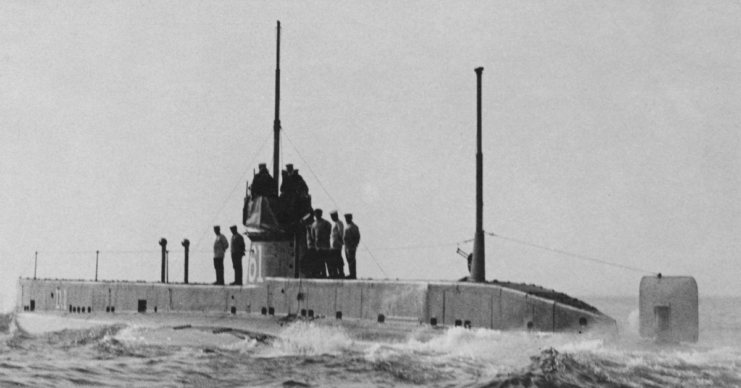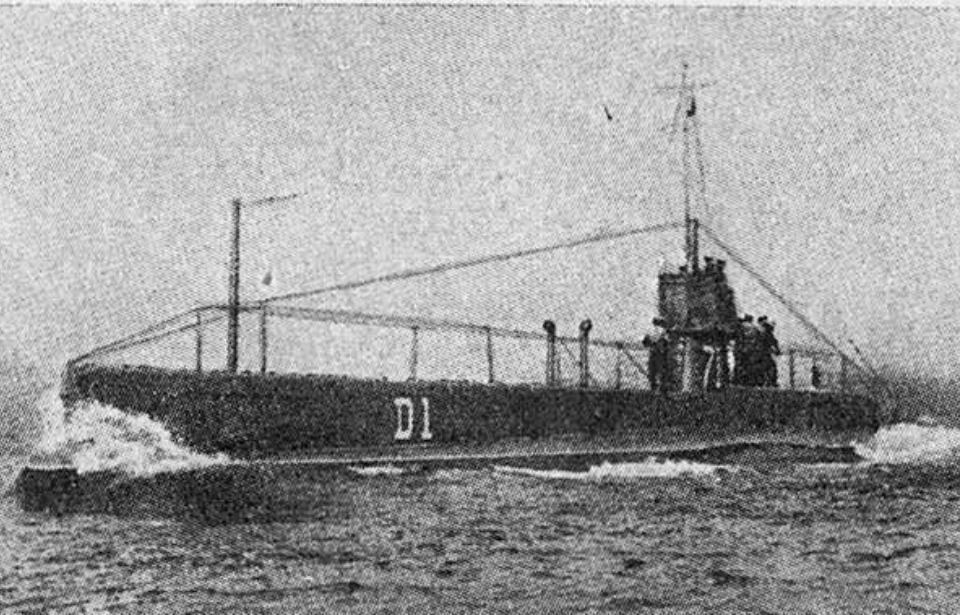When divers discovered a submarine wreck on the seafloor of the English Channel, they knew they’d located a historically valuable find. The 112-year-old British vessel, the HMS D1, was the first modern submarine and set the standard for future designs.
HMS D1

The HMS D1 was the successor to the C-class of submarines and brought about some revolutionary new features, setting the standard for submarine design from then on. The vessel was larger and faster, more powerful and advanced, and much more maneuverable than previous designs, and just like the HMS Dreadnought (1906) did in the battleship arms race, D1 gave the United Kingdom a distinct advantage in underwater warfare.
D1‘s 2,000-nautical mile range and week-long endurance meant she could actively hunt and destroy enemy ships, instead of being relegated to shoreline defenses. She was longer and wider than her predecessors, making her more rugged and stable. To further increase her agility, the submarine was fitted with two propellers, and torpedo tubes were mounted at the bow and stern to aid in her offensive effectiveness. This meant that, unlike other submarines, D1 didn’t have to turn her hull fire at a target behind her.
Arguably the most significant departure from tradition by the HMS D1 was the use of diesel engines, instead of petrol or paraffin. As diesel is much harder to ignite than the latter fuels, the submarine was much safer from fires or explosions. On the surface, she used two 600-horsepower diesel engines for propulsion, one driving each propeller, and when submerged was powered by two 275-horsepower electric motors. This gave D1 a surfaced top speed of 14 knots and a submerged speed of nine knots.
The submarine was laid down by Vickers in 1907, and commissioned two years later. With the launch of D1, the entire future of submarine design changed. She served until 1918, when, despite her historic value, she was scuttled during target practice.
Discovery of the wreck of the HMS D1
The wreck of the HMS D1 was known to divers and archeologists, but had long been believed to be an early German U-boat. The discovery of the wreck’s true nature was of huge importance, as it was a major milestone in global submarine development.
Three years of research by divers and a US historian resulted in the conclusion that the wreck off the coast of Devon was, in fact, D1. Historian and author Mark Harris said, “D1 is of great historical significance because it was the original prototype for most of the British offensive submarines which fought in World War One.” He adds, “Archaeologically, D1 is also very significant, because she is potentially the best-preserved British submarine that served in World War One.”
The process of identifying D1 has taken years, due to the complex and costly process of visiting and documenting wrecks. Many images of the submarine were scoured over and compared to original diagrams of the vessel by historians. Distinct features like the conning tower, torpedo tubes and propellers were all used to cross-reference the wreck to plans for D1.
The reference materials were sourced by a British technical diving team led by Steve Mortimer, who worked around the wreck lower than 50 meters down. With this information, they confirmed it was, indeed, D1.
US historian Michael Lowrey said, “The submarine’s rudder arrangement was the main feature which convinced us that it was not a German craft.” He added, “We then began to suspect it was a British submarine. Careful examination of other features on the vessel and a detailed study of naval records then narrowed it down.”
Mortimer explained, “Expecting to find the remains of a German U–boat, we were thrilled to discover a ground-breaking British submarine instead. It’s tremendous that D1 is now protected but divers can still visit.”
More from us: USS Pueblo (AGER-2): The Only Commissioned US Navy Ship Currently Held Captive
The HMS D1 has been listed as a protected historic monument by the British government, as suggested by Historic England. Once again, this wreckage so close to the British shore highlights how many more undiscovered artifacts remain below the waves.
